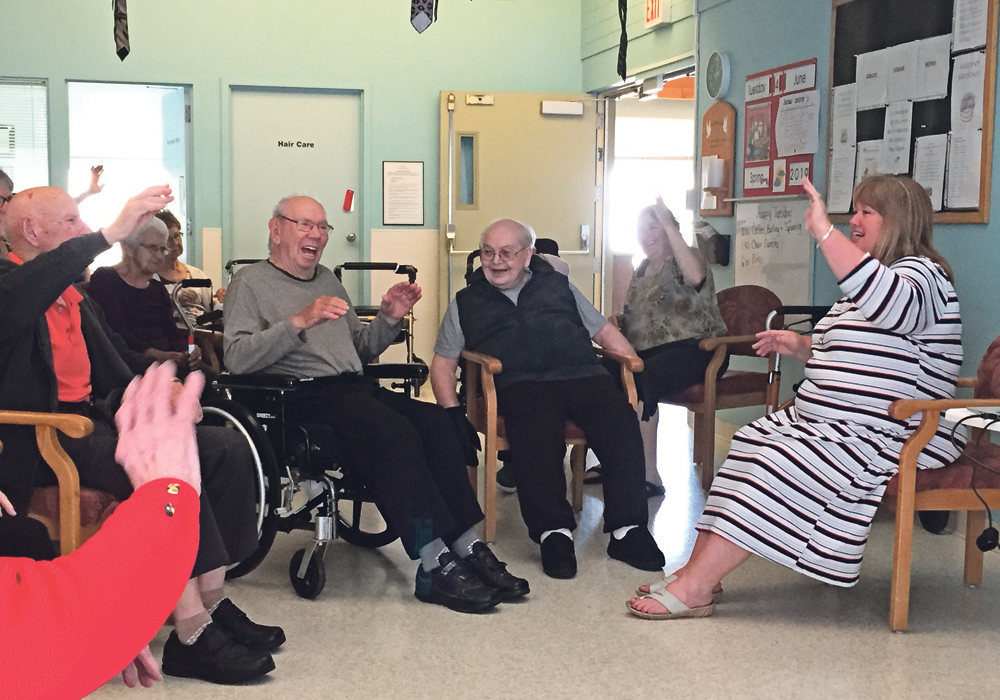Personal-care facilities participate in study exploring how music and movement affect elderly and dementia patients
Communities in southwestern Manitoba have wrapped up the third phase of a research project studying the effects of music and movement in the elderly and in people living with dementia.
The research was carried out as a joint project between Brandon University and Trent University in Peterborough, Ont.,
Five personal-care facilities were involved in the Brandon portion of the study: Hamiota, Neepawa, Carberry, Killarney and Minnedosa, with one community centre in Brandon also taking part.
Known as the Sharing Dance Seniors Program, it was designed by Canada’s National Ballet School (NBS) in partnership with Baycrest Health to make dance accessible to older adults with a wide range of physical and cognitive abilities. As the benefits became apparent, the NBS reached out to researcher Mark Skinner of Trent University, who designed the study to investigate the potential of the program to improve social inclusion for Canadians living with dementia and the people who care for them.
Read Also

Nutritious pork packed with vitamins, essential minerals
Recipes for pork
In southern Manitoba, the program was delivered each week via remote-guided instruction (Telehealth) with an on-site facilitator and research associate present in the room, along with family members and volunteers to assist. It consisted of a three-quarter hour period of theme-based sequenced narrative with music and corresponding movement.
In essence, the online facilitator portrayed an image of a time or place through a verbal description, showed a movement for participants to model that everyone could perform from a seated position, and then a keyboard provided a familiar tune to complete the narrative.
For example, one scenario depicted a railroad-based story. The facilitator described a hot, sweaty job with the digging in of railway ties, pounding of spikes, wiping sweat from the brow, looking for the train in the distance, and finally the chugging of the train down the track. She showed movements to accompany each description and finally the whole scenario was set to the music of I’ve Been Working on the Railroad. Participants were literally dancing in their seats as they followed along with the actions.
The session ended with the keyboard playing You Are My Sunshine, to which everyone in the room sang along.
The four-year study is due to conclude at the end of 2020 and is targeted at rural communities. The pilot project has already been completed in the Peterborough area.
In many cases, people with dementia have full recall of music.
“Music is magic,” said Dana Routledge, recreation director at Birch Lodge in Hamiota and on-site facilitator for the Shared Dance Program.
“It can do things I cannot even touch. For those affected with memory difficulties, speech, and sometimes even speaking a full sentence, is a challenge. Put on a familiar song and they can sing beginning to end, flawlessly. They have moved, danced, sang, and enjoyed immensely. I know its value.”
Brandon University’s Rachel Herron worked in conjunction with Skinner.
She said the dance program demonstrates social and emotional health benefits for both participants and their caregivers.
“Programs like these are essential to enrich peoples’ lives. We must change the perception that arts-based programs are non-essential.”
Two program participants said the program is suited for people with limited mobility and memory issues.
“You don’t have to stand up to be able to dance. You can dance wherever you are, sitting down, and you can move and do things and have fun even if your mobility is somewhat limited,” said one participant.
Added another participant: “She told us to not worry if you get — because I’ve got — Alzheimer’s. I get mixed up, but I don’t care, I didn’t do the same thing that they were doing but I kept going and I had fun. I really had fun.”
Skinner holds the Canada Research Chair in Rural Aging, Health and Social Care and is the founding director of the Trent Centre for Aging and Society. He designed the study to explore the broader social impacts of the Sharing Dance Seniors Program.
Research associate An Kosturko of Trent University was on hand each week at the sessions to interact, observe, and document the findings.
The research is gathered in four different ways: by observation of sessions by Kosturko, review of weekly diaries kept by the participants, follow-up interviews conducted by Kosturko at the conclusion of the program, and group discussions between facilitators, volunteers, staff, and participants.
The research team is now analyzing the findings.
The study was funded by the Canadian Institute of Health Research and the Alzheimer Society of Canada, with support from the Canada Research Chairs program.
The program is scheduled for nation-wide expansion as part of a partnership with the Public Health Agency of Canada in collaboration with long-term care homes, regional home care providers, and community support agencies.

















